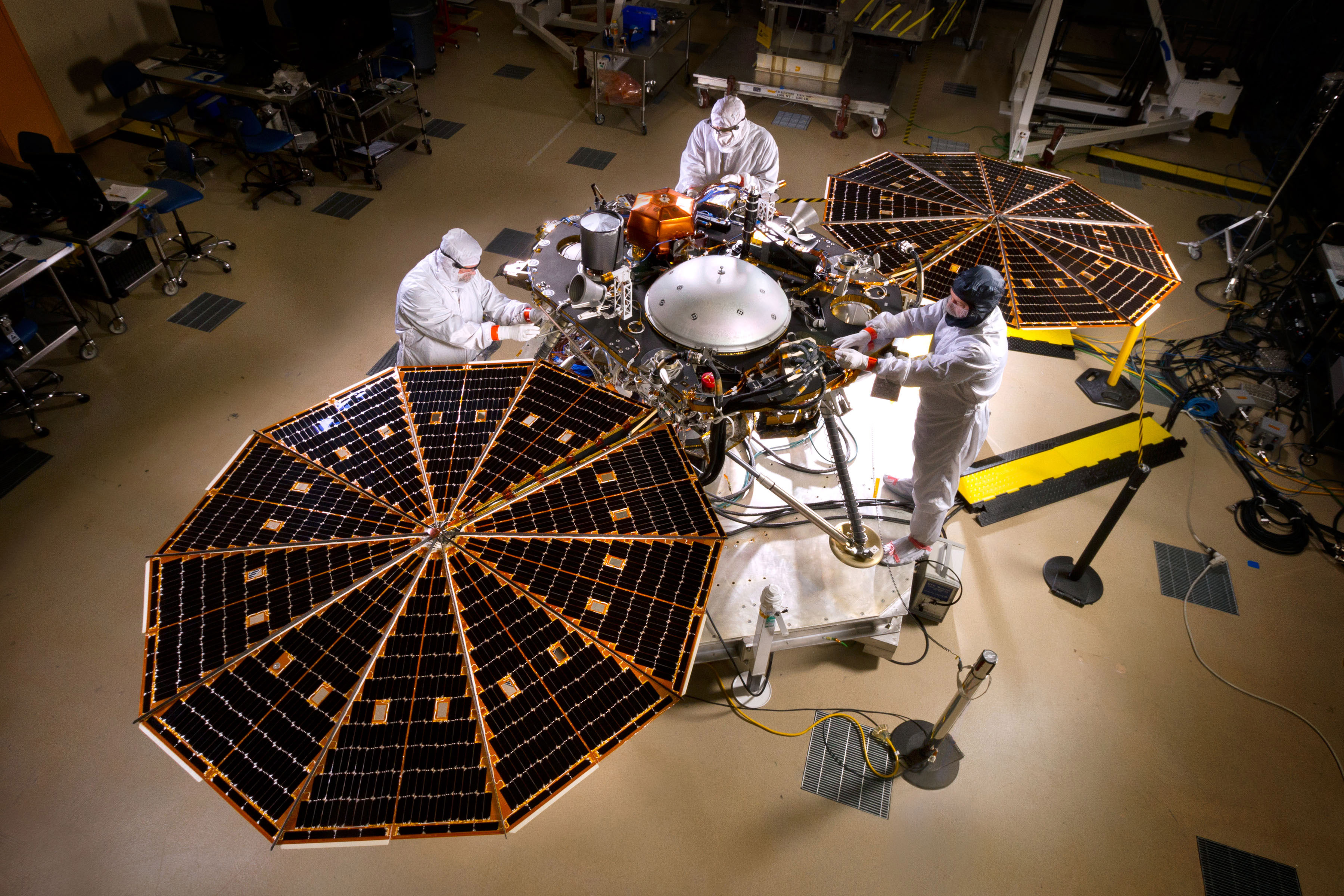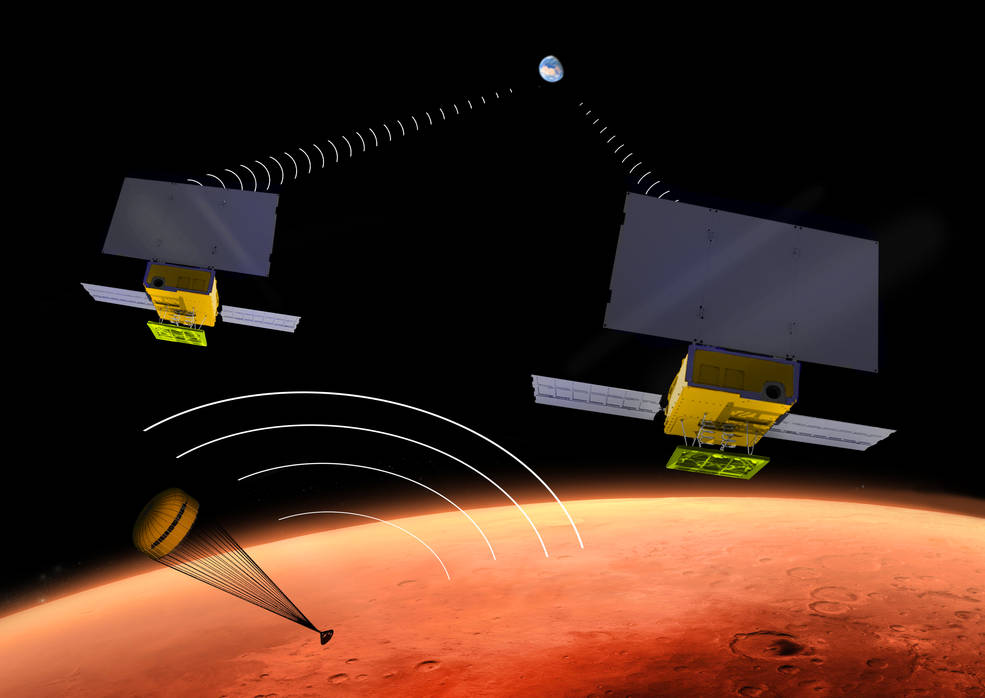

by KEN KREMER on MAY 29, 2015

NASA’s InSight Mars lander spacecraft in a Lockheed Martin clean room near Denver(May 2015). As part of a series of deployment tests,
the spacecraft was commanded to deploy its solar arrays in the clean room to test and verify the exact process
that it will use on the surface of Mars.
CREDITS: NASA/JPL-Caltech/Lockheed Martin

Back shell of NASA’s InSight spacecraft is being lowered onto the mission’s lander,
which is folded into its stowed configuration. The back shell and a heat shield form the aeroshell,
which will protect the lander as the spacecraft plunges into the upper atmosphere of Mars.
Launch now rescheduled to May 2018 to fix French-built seismometer.
Credit: NASA/JPL-Caltech/Lockheed Martin
By Paul Scott Anderson

Artist’s conception of the MarCO CubeSats flying past Mars as the InSight lander descends to the surface. Image Credit: NASA/JPL-Caltech The next NASA mission to Mars, the InSight lander, will include some additional experimental technology:
the first deep-space CubeSats. Two small CubeSats will fly past the planet as the lander is descending through the atmosphere;
this will be the first time CubeSats have been used in an interplanetary mission.

This artist’s concept depicts the InSight lander on Mars after the lander’s robotic arm has deployed
a seismometer and a heat probe directly onto the ground. InSight is the first mission dedicated to investigating
the deep interior of Mars. The findings will advance understanding of how all rocky planets, including Earth,
formed and evolved. NASA approved a new launch date in May 2018.
Credits: NASA/JPL-Caltech

The Insight lander responds to commands to spread its solar arrays during a January 23, 2018 test at the Lockheed Martin clean room in Littleton, Colorado. Image: Lockheed Martin Space

This artist’s illustration of InSight on a photo background of Mars shows the lander fully deployed. The solar arrays are open, and in the foreground two of its instruments are shown. On the left is the SEIS instrument, and on the right is the HP3 probe. Image: NASA/Lockheed Martin

In this image, InSight’s Instrument Deployment Arm is practicing placing SEIS on the surface. Image: NASA/Lockheed Martin

The two RISE antennae are shown in this image. RISE will reveal information about the Martian core by tracking InSight’s position while Mars orbits the Sun. Image: NASA/Lockheed Martin

nSight will land at Elysium Planitia, just north of the Martian equator. Image: NASA/JPL-CalTech
Mission team members for InSight, the new Mars lander mission selected by NASA to launch in 2016, explain how the spacecraft will advance our knowledge of Mars' evolution.

In the course of exploring Mars, the many landers, rovers and orbiters that have been sent there have captured some truly stunning images of the landscape. Between Spirit, Opportunity, Curiosity, the Mars Reconnaissance Orbiter (MRO) and others, we have treated to some high-definition images over the years of sandy dunes, craters and mountains – many of which call to mind places here on Earth.

Smooth, flat ground dominates InSight’s landing ellipse in the Elysium Planitia region of Mars. Credit: NASA/JPL-Caltech/ASU

This artist’s concept depicts the smooth, flat ground that dominates InSight’s landing ellipse in the Elysium Planitia region of Mars. Credit: NASA/JPL-Caltech

This artist’s concept depicts the InSight lander on Mars after the lander’s robotic arm has deployed a seismometer and a heat probe directly onto the ground. Credits: NASA/JPL-Caltech

An artist’s rendering of the twin Mars Cube One (MarCO) spacecraft as they fly through deep space. Credit: NASA/JPL-Caltech
NASA's next mission to Mars is weeks away from its May 2018 launch. InSight is more than a Mars mission. Its team members hope to unlock the mysteries of the formation and evolution of rocky planets, including Earth. For more about the mission, visit